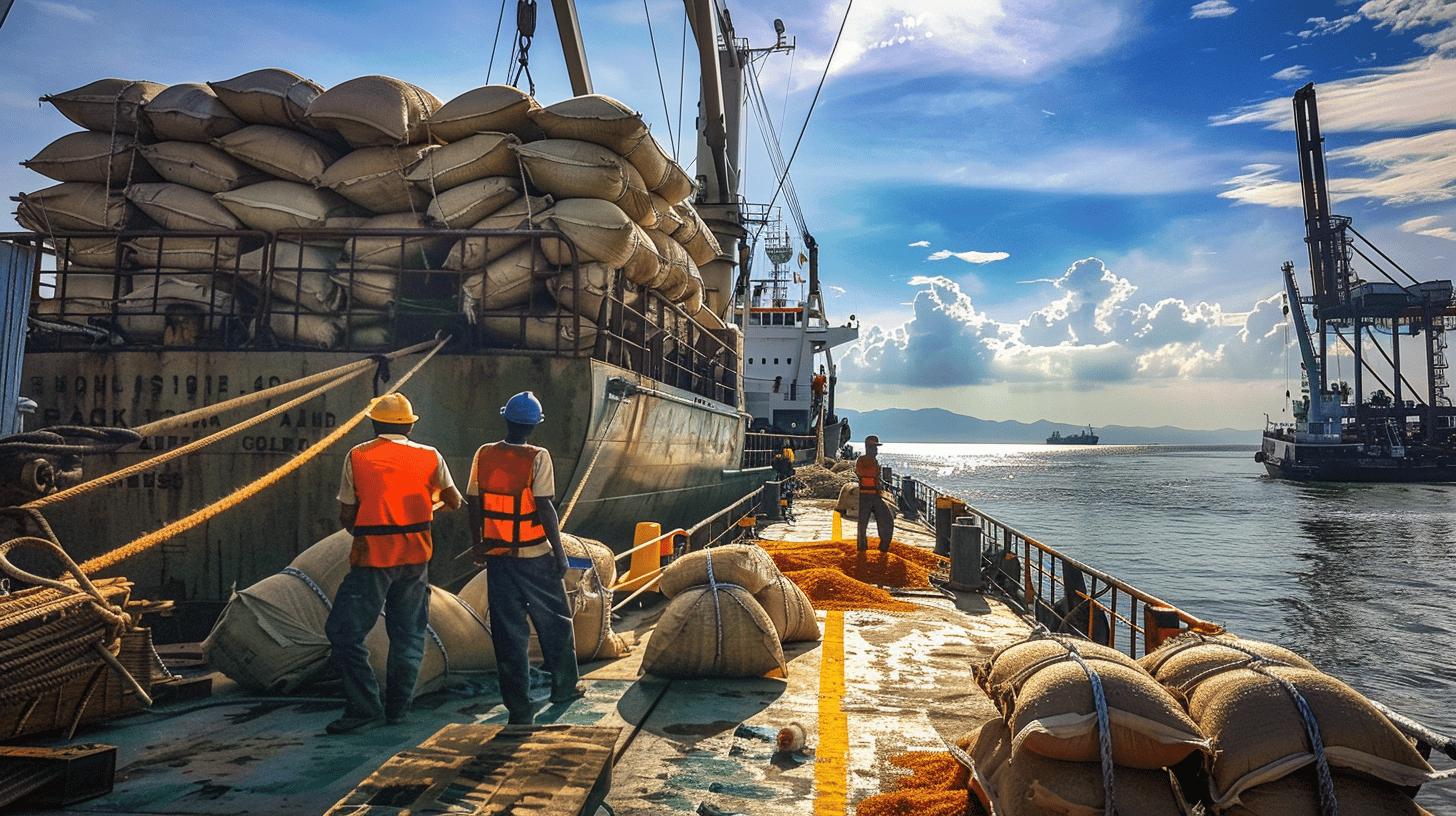Can sugar trade lead the way in redefining global economic dynamics? This pivotal question underscores the importance of the sugar import-export industry, a significant contributor to agricultural trade. With Brazil, India, and Thailand leading as major exporters, and the European Union, China, and the United States as primary importers, the interplay between countries shapes the international sugar market. Economic shifts and product shortages create lucrative opportunities for businesses. Understanding these global dynamics is crucial for anyone looking to capitalize on this sector’s potential. Dive into the world of sugar trade to unearth these prospects.
Understanding the Global Sugar Import Export Dynamics

The global sugar import-export industry is a key component of the agricultural trade market, with Brazil, India, and Thailand standing out as the major sugar-exporting nations. Brazil, the world's largest sugar producer, significantly influences global trade by supplying large volumes to international markets, thereby stabilizing prices and meeting the rising demand. India and Thailand follow suit, contributing substantial quantities that address the demands of sugar-deficient regions. These countries leverage vast sugarcane plantations and efficient production systems, impacting the availability and cost of sugar worldwide.
Economic changes heavily influence the sugar market, often creating both challenges and opportunities for importers and investors. Fluctuations in currency, trade policies, and geopolitical tensions can affect sugar prices and availability. For importers, these changes may present opportunities to secure sugar at competitive rates, opening avenues for increased profit margins. Moreover, the global shift toward renewable energy and biofuels has spurred demand for sugarcane-derived ethanol, further impacting sugar trade dynamics and offering investment prospects in related sectors.
Below is a table comparing the top sugar-importing and exporting countries, detailing their export volumes in metric tonnes:
| Country | Export Volume (metric tonnes) |
|—————–|——————————|
| Brazil | 29 million |
| India | 6 million |
| Thailand | 7 million |
| European Union | 3.6 million |
| China | 3.9 million |
| United States | 3.2 million |
Brazil, India, and Thailand, as major exporters, significantly influence the international sugar market by balancing supply and demand, which affects global pricing and availability.
Key Regulations and Policies in Sugar Import Export

Trade policies are critical to the global movement of sugar, shaping how and where sugar flows across borders. These policies determine the economic viability of sugar exports and imports, influencing prices and availability in the international market. Countries implement regulations to control the supply of sugar within their borders, ensuring that domestic industries are supported while maintaining competitive pricing for consumers. This intricate web of policies requires careful navigation by stakeholders to maximize trade benefits.
Tariffs and quotas serve as primary tools in managing sugar prices and safeguarding domestic markets. Tariffs impose additional costs on imported sugar, which can deter excessive imports and protect local producers from international competition. Quotas, on the other hand, set limits on the volume of sugar that can be imported at preferential rates, with any excess subject to higher duties. These mechanisms are designed to stabilize the sugar market, aligning supply with demand and preventing price crashes that could harm domestic industries.
Acquiring the necessary import permits and export licenses is a detailed process essential for businesses engaged in international sugar trade. In the United States, the USDA manages the sugar import program, requiring importers to obtain permits or certificates of quota eligibility. This ensures compliance with established quotas and tariffs, helping to balance the domestic supply. Exporters must also secure licenses, particularly in countries where sugar is a regulated commodity. These licenses are vital for controlling the outflow of sugar, maintaining domestic supply levels, and adhering to international trade agreements.
Countries face numerous challenges due to these stringent regulations, including market volatility and compliance burdens. Trade policies can lead to unpredictable shifts in supply and demand, affecting global prices and creating uncertainty for businesses. Additionally, navigating the complex regulatory landscape requires significant resources and expertise, which can be a barrier for smaller players in the market. These challenges necessitate strategic planning and adaptability to harness the opportunities presented by the global sugar trade.
Sugar Import Export Supply Chain Logistics

Transporting and storing sugar pose significant challenges due to the need for maintaining product quality and preventing contamination. Sugar's hygroscopic nature requires careful handling to avoid moisture absorption, which can lead to clumping and spoilage. Proper transportation methods, such as sealed containers and climate-controlled environments, are crucial for preserving the sugar's integrity during transit. Storage facilities must also be equipped to manage temperature and humidity levels, ensuring that sugar remains in optimal condition until it reaches its final destination.
Technology plays a pivotal role in optimizing sugar trade logistics by enhancing efficiency and reducing costs across the supply chain. Advanced tracking systems and digital platforms enable real-time monitoring of shipments, providing visibility into the movement of goods and allowing for proactive management of any issues that arise. Automation in warehousing and distribution streamlines operations, minimizing human error and improving throughput. Additionally, technological advancements in infrastructure support the development of robust distribution networks, facilitating the seamless flow of sugar from producers to consumers.
- Transportation
- Storage
- Handling
- Technology
- Infrastructure
Analyzing Sugar Price Trends and Market Opportunities

Current trends in the sugar market reveal fluctuating prices driven by several key factors, including trade tariffs and economic policies. What primary factors influence sugar prices today? Fluctuating sugar prices are primarily driven by global supply-demand dynamics, geopolitical tensions, and regulatory policies. Economic changes, such as currency fluctuations and trade agreements, further impact pricing, making it essential for market participants to continuously analyze these variables. Environmental concerns, like adverse weather conditions affecting sugarcane production, also contribute to price volatility by disrupting the supply chain.
The demand for organic and non-GMO sugar products is on the rise, reflecting a significant shift towards sustainable consumption patterns. Why is the demand for organic sugar increasing? The demand for organic sugar is increasing due to heightened consumer awareness about health and environmental impacts. Consumers are prioritizing products that are free from synthetic pesticides and genetically modified organisms, leading to a surge in organic sugar consumption. This trend encourages producers to adopt sustainable farming practices, which, in turn, supports the development of a more environmentally friendly sugar industry.

Examining sugar price fluctuations over the past five years showcases the market's inherent volatility and the opportunities for strategic investments. How have sugar prices varied in recent years? Sugar prices have experienced significant fluctuations, influenced by varying production levels in key exporting countries and shifting global demand. The line chart illustrates a pattern of peaks and troughs, highlighting periods of price spikes due to supply shortages and subsequent declines when supply stabilizes. Such trends present both challenges and investment opportunities for stakeholders aiming to optimize their market position in this dynamic industry.
Future Prospects and Challenges in Sugar Import Export

Emerging markets represent a significant potential growth area for the global sugar trade. Countries in regions such as Asia and Africa are experiencing rising consumption rates due to increasing population and urbanization. As these markets expand, they will likely play a crucial role in driving global demand for sugar. What impact does this growth have on global demand? The expansion of emerging markets is expected to significantly boost global sugar demand, necessitating increased production and trade to meet consumer needs. This growth presents opportunities for investors and exporters to capitalize on new markets and diversify their portfolios.
The sugar industry faces several challenges that could impede its growth and sustainability. Environmental impacts, including deforestation and water usage associated with sugarcane production, pose significant concerns. Additionally, trade barriers such as tariffs and export restrictions complicate the movement of sugar across borders. How do these challenges affect the industry? These challenges lead to increased production costs and market volatility, complicating strategic planning for businesses. Addressing these issues requires collaboration between governments, producers, and international organizations to develop sustainable practices and fair trade policies.
There is a notable shift towards sustainable and environmentally friendly production methods in the sugar industry. Producers are increasingly adopting practices that minimize environmental impact, such as using organic fertilizers and implementing water conservation techniques. What drives this shift? The shift is driven by consumer demand for eco-friendly products and regulatory pressures to reduce the carbon footprint of agriculture. This trend is anticipated to continue, with more companies investing in green technologies and sustainable farming practices to remain competitive and meet regulatory requirements.
Expert opinions suggest that the sugar industry is poised for transformation as it adapts to these emerging trends and challenges. Analysts predict that the industry's trajectory will be characterized by increased emphasis on sustainability and innovation. How is the industry expected to evolve? The industry is expected to evolve towards greater efficiency and environmental responsibility, with advancements in biotechnology and precision agriculture playing key roles. As stakeholders navigate these changes, they must remain agile and proactive, positioning themselves to seize opportunities in the evolving market landscape.
Final Words
Navigating the complexities of the sugar import-export landscape requires understanding global trade dynamics, regulatory frameworks, and supply chain logistics. Key players like Brazil, India, and the U.S. influence market movements, while regulatory policies and tariffs play crucial roles in stabilizing industries. As supply chain efficiency becomes essential, technology emerges as a vital component in logistics management.
Opportunities abound in this evolving market, especially with growing demand for sustainable and organic products. Despite challenges such as fluctuating sugar prices and environmental concerns, the future of sugar trade presents promising prospects for innovation and growth.
FAQ
Is sugar an import or export?
Sugar is both an import and an export product. Countries like Brazil and India are major sugar exporters, while the European Union, China, and the United States are significant importers.
Who is the biggest exporter of sugar?
Brazil is the largest sugar exporter, significantly impacting global sugar trade through its high export volumes.
Who is the biggest sugar importer?
The European Union is the largest sugar importer, influencing international sugar market dynamics with its substantial import requirements.
What percentage of U.S. sugar is imported?
Approximately 16% of U.S. sugar is imported, regulated through quotas and tariffs under the U.S. sugar import program.
What is the U.S. sugar quota for 2024?
The U.S. sugar quota for 2024 is a predetermined allotment managed by the USDA, aimed at stabilizing prices and supporting domestic producers.
What is a sugar import permit?
A sugar import permit is a legal authorization required to import sugar into a country, often needed to comply with government quotas and regulations.
What are sugar tariffs in the United States?
Sugar tariffs in the U.S. are duties imposed on imported sugar, designed to protect domestic sugar producers by maintaining competitive pricing.
Why is the U.S. sugar program controversial?
The U.S. sugar program is controversial due to its impact on consumer prices and global trade relations, often criticized for benefiting domestic producers at the expense of market competition.
What is the sugar import export dynamics by year?
The annual dynamics of sugar import and export vary based on global market conditions, economic changes, and policy adjustments by major sugar-producing and importing countries.

